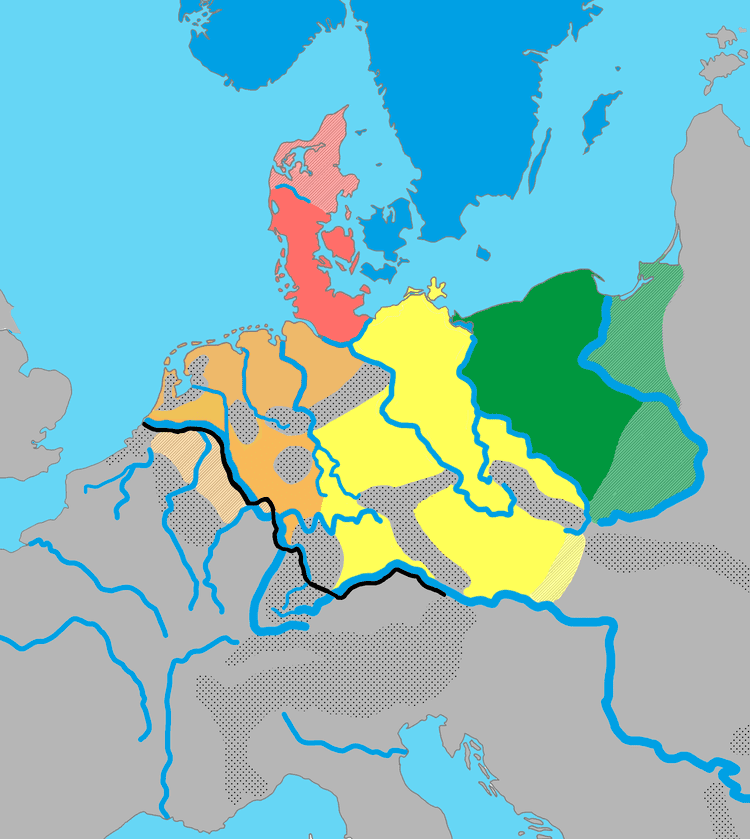ISO 639-5: gme | ||
 | ||
Linguistic classification: Indo-EuropeanGermanicEast Germanic Subdivisions: BurgundianGothicVandalic Glottolog: (not evaluated)goth1244 (Gothic) | ||
The East Germanic languages are a group of extinct Germanic languages of the Indo-European language family spoken by East Germanic peoples. The only East Germanic languages of which texts are known are Gothic and its dialect, Crimean Gothic; other languages that are assumed to be East Germanic include Vandalic and Burgundian, though very few texts in these languages are known. Crimean Gothic is believed to have survived until the 18th century.
Contents
History
By the 1st century AD, the writings of Pomponius Mela, Pliny the elder, and Tacitus indicate a division of Germanic-speaking peoples into large groupings with shared ancestry and culture. (This division has been appropriated in modern terminology about the divisions of Germanic languages.)
Based on accounts by Jordanes, Procopius, Paul the Deacon and others; linguistic evidence (see Gothic language); placename evidence; and archaeological evidence, it is believed that the East Germanic tribes, the speakers of the East Germanic languages related to the North Germanic tribes, had migrated from Scandinavia into the area lying east of the Elbe. In fact, the Scandinavian influence on Pomerania and northern Poland from period III onwards was so considerable that this region is sometimes included in the Nordic Bronze Age culture (Dabrowski 1989:73).
There is also archaeological and toponymic evidence that Burgundians lived on the Danish island of Bornholm (Old Norse: Burgundaholmr), and that Rugians lived on the Norwegian coast of Rogaland (Old Norse: Rygjafylki).
Groups
Groups identified as East Germanic tribes include:
Traditionally the Langobards were classified as East Germanic, however, the Lombardic language is now considered by many specialists to be close to Old High German, especially its Upper German dialects, which would make a classification as West Germanic rather than East Germanic more sensible.
